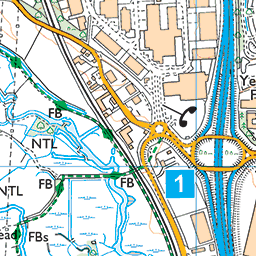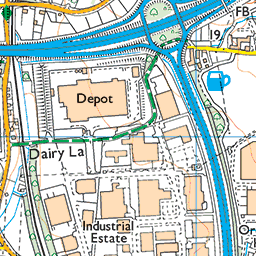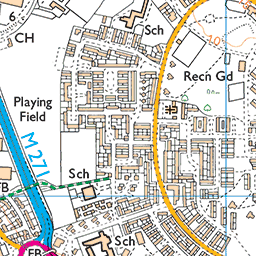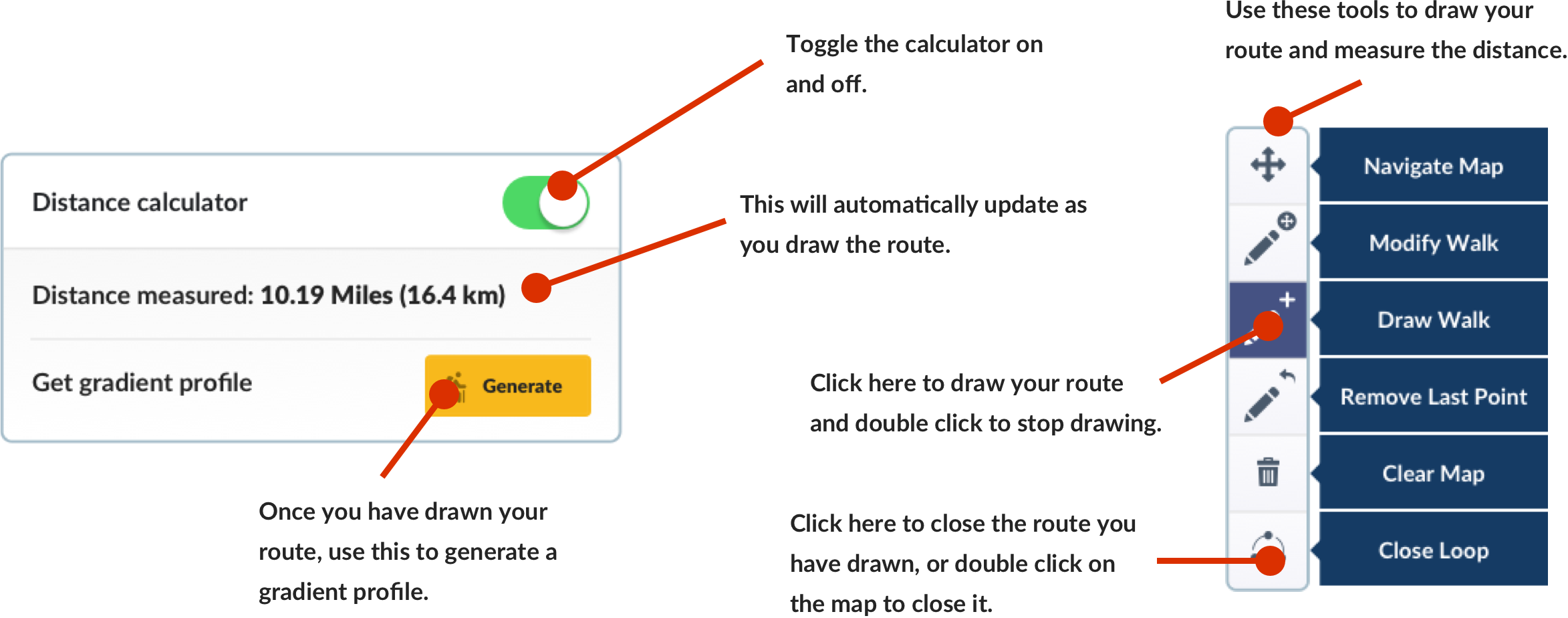Thames Path Map and Trail Information
See the map and find answers to the most common questions about the Trail below
Following England's best known river for 185.2miles (298 km) as it meanders from its source in the Cotswolds through several rural counties and on into the heart of London. Enjoy peaceful water meadows rich in wildlife, historic towns and cities and many lovely villages, finishing at Woolwich just a few miles from the sea.
Use the Map Filter to see places to visit and where to stay along the Thames Path. View information on the map by ticking the boxes in the Map Filter.
Wedi’i ychwanegu at eich Cynllunydd Taith isod
Cyfrifiannell pellter
Customise your trip with our filters.

Ewch o un opsiwn i’r llall isod i ddangos y marcwyr sydd ar gael.
Cyffredinol Marchogaeth BeicioLlety
Pwyntiau o ddiddordeb
Gwasanaethau
Llwybrau
Llety
Pwyntiau o ddiddordeb
Trafnidiaeth
Llety
Pwyntiau o ddiddordeb
Trafnidiaeth


















Mae'r proffil o uchder eich teithlen yn cael ei greu pan fyddwch yn defnyddio’r cyfrifiannell pellter (uchod) i dynnu llinell.

Select the blue arrow tabs below for more details.
The Trail is 185.2miles (298 km) long. As a guide, using roughly 15 miles/24 Km a day as an average daily walking distance, the Trail can be completed in 14 days allowing for a couple of days’ rest. However it’s important to walk at the pace that suits you, allowing time for exploring and relaxing, and there is no pressure to do it quickly – the Thames Path is there for you to enjoy, and doesn’t have to be a route march!
You don’t have to walk it all in one go of course, you can dip in for half or a full day’s walk or complete is section at a time.
The Thames Path is a gentle Trail, suitable for people with a wide range of abilities.
It is mainly flat, with just a few natural slopes. Many places along it can be accessed by people with limited mobility such as users of wheelchairs or mobility scooters, parents with pushchairs or those using a walking stick.
In recent years most of the stiles along the Trail have been replaced with gates. However there are still structures which may be barriers for many people with reduced mobility.
Diversions show as exclamation marks on our interactive map, with details of the diversion routes. We rely on information about these from the local highway authorities and landowners. Information is correct at the time of posting on the website.
We have route descriptions to give you an idea of what each section offers and help you decide where you’d like to walk.
Check out the Visit Thames website for inspiration and ideas, things to do and places to stay along the River Thames
Stamp a Thames Path Passport as you walk the trail.
The Thames Path Team are working in conjunction with Walk the Thames on a fantastic Thames Passport initiative. What could be better than formalising your achievement of walking the Thames Path by collecting stamps in a Thames Path Passport as you go? By collecting one stamp per page, you will also get a completion certificate!
With over 30 stamping stations there are plenty to choose from, including pubs, tea shops, museums, visitors’ centres, and churches. Plan them into your route as rest stops and have a refreshment break while your passport is stamped! If you pass a stamping station during its closed hours, you won’t miss out, because virtual stamps are also available – these are QR codes displayed on a poster in the window of the venues.
The purchase price is just £7.50 (includes the certificate) and for every passport purchased a donation of £1.50 will go to the upkeep of the National Trail.
For more information on the Passport scheme, click here: https://walkthethames.co.uk/thames-path-passport/
To purchase a Thames Path Passport, please click here: https://walkthethames.co.uk/product/thames-path-passport/
Work continues to make the trails accessible to more people.
Our Access for all page brings together access information about the National Trails including easy access walks and sources of further information.
Walks for All on the River Thames
To encourage everyone to make the most of the Thames Path, National Trails and the Environment Agency published 12 walks along different parts of the River Thames, all with level and wide paths, gentle slopes and rest areas.
Each walk comes with a handy map and details about distance, type of surface and where to find accessible local refreshments and toilets, so everyone can decide which walks are right for them. Visit the Visit Thames website to download the walks
There are some great walks to enjoy along parts of the Thames Path, which will give you a flavour of the wonderful, peaceful nature of the Thames Path landscape. Find the perfect walk for you in the Further Information section and on our interactive map.
The Thames Path is a Public Footpath. It’s often very narrow between the River Thames and fields or houses. It is not a long-distance or off-road cycle route.
Highway Code for Cyclists Rule 64 states you must not cycle on pavements, this includes Public Footpaths.
There are a few exceptions, where the Thames Path is marked as Public Bridleway. For example: between Pangbourne and Goring where the Thames Path is part of the King Alfred’s Way off-road cycle route.
The Thames Path Partnership is committed to supporting cycling wherever it is physically possible. This is usually in towns and cities where the local highway authority provides a hard and wide surface suitable for segregating walkers from cyclists. You can find these short cyclable sections by looking at our interactive map and selecting the cycling filter.
Please give way to walkers, especially people with children, and anyone using wheel-chairs and mobility scooters.
Outside London
Sustrans includes sections of the Thames Path in its 99 miles (159km) Thames Valley Cycle Route between Oxford and London.
In Oxford you can cycle for 5.4 miles (8.7km) beside the River Thames through the city. This links with cycle ways to residential and employment areas to make Oxford easier to get around on bikes.
You can cycle between Teddington Lock and Weybridge. This is a 10 mile (16km) route marked on the Thames Path interactive map – use the Cycling filter.
In London
Sustrans has several London routes, two on the Thames Path: Tower Bridge to Greenwich, and Hampton Court to Putney.
Some London boroughs allow cycling along specific sections of the Thames Path. This may be on segregated surfaces to keep walkers and cyclists safe.
Code of Conduct for cycling in Richmond Park
Tower Bridge to Greenwich
Distance: 4.7 miles, 7.6 km
Starting from the iconic Tower Bridge, this section of National Route 4 weaves around the River Thames through various parks to the Cutty Sark at Greenwich.
Hampton Court to Putney
Distance: 12.6 miles, 20.2 km
Ride or walk this route in either direction, so why not start in Putney and end up at the glorious Hampton Court Palace? Get lost in the maze, tour the beautiful gardens and relive Tudor England at its best.
Cycling safely in London:
The London Cycle campaign
has a cycling journey planner, choose for example a quiet or a fast route.
Visit London have traveller information for getting around London on cycle paths
To find health walks visit the The Ramblers’ Wellbeing Walks page. You can browse Walking for Health schemes local to you via the listings. You can search for specific schemes or search by specific postcode or place name.
Yes, visit the link for more details
https://www.nationaltrail.co.uk/en_GB/trails/thames-path/trail-information/sustainable/
Check out our Volunteering page and then send an email to NT.Volunteers@Oxfordshire.gov.uk
National Trail volunteer Dick Mayon White and Wendy Yorke’s book Exploring the Thames wilderness, is full of walks on the wild side of the Thames. The River Thames is an often undiscovered haven of stunning scenery, wonderful wildlife and brilliant natural beauty. As well as the famous stretches passing through our biggest cities and towns, there is a hidden side to the river – wild and natural, but surprisingly accessible. This guidebook, compiled by the two major Thames charities, contains a wealth of information on over 150 of the best places to explore the real Thames wilderness, along with enjoyable walks and activities along its course.
Downstream of Oxford there is good access to many places along the Thames Path by train, bus and even boat, with London and the larger towns and cities through which the Trail runs very easily accessible by public transport.
Upstream of Oxford, with a little planning, the Thames Path can also be reached in many places by public transport.
Bristol Airport is the closest airport to the western end of the Trail. The eastern end of the Trail is easily reached from London’s airports.
You can find up-to-date public transport information including a journey planner at www.traveline.info. For detailed rail information please see www.nationalrail.co.uk
For public transport in London use the Transport for London journey planner.
The Trail is easily reached from the motorway network with the M4 motorway linking London to Bristol in the west and the M40 passing close to Oxford.
There are plenty of campsites along the Trail and they can be viewed on the Interactive Map.
If you plan to camp please note in England and Wales, there are normally no rights for national trail users to wild camp along the way – so seeking the landowner’s permission is recommended.
There are several companies that will arrange to move your bags for you, help you plan your trip, or arrange a full package.
View a list of these companies here: Walking Holidays & Baggage Transfers.
The best months to visit are spring through to the end of autumn since during winter the Thames is prone to flooding, particularly upstream of Oxford. For up-to-date information on flooding contact the Environment Agency’s Floodline on 0345 988 1188 or visit the Gov.uk website: Check for Flooding.
If you’re interested in wildlife there are always a range of birds present on and around the river but they’re at their most active and visible during April and May whilst establishing territories and finding mates. If you’re keen on wildflowers, then April to September is the time to visit, and if insects such as butterflies, damselflies and dragonflies are the things you’d most like to see choose June to September.
If you’re planning a winter walk along the Thames Path – particularly in the upper reaches near the source and down to Oxford – there’s a chance you’ll come across flooding – so before you set out
• check the Flood warnings web page
• check the River Levels web pages
• check if there are diversions you could make, in case you encounter very muddy or flooded routes
River levels are often high on the River Thames upstream of Oxford. Flooding of low lying roads and land is possible close to the river. It is likely after a period of significant rainfall the upper reaches of the Thames can be waterlogged as the Trail passes through or nearby water meadows. Walkers are advised not to attempt to walk through floodwater as it is not possible to see where the river bank starts. For up-to-date information on Flooding please visit flood-warning-information.service.
Please be aware also that there may be areas of churned up mud especially around gates or where cattle have gathered.
There is no “best” direction – it all depends on what you’d like to experience! However the prevailing wind is from the southwest, so starting at the source of the River Thames in the Cotswolds and walking towards London will usually mean any wind will be behind you, and the official National Trail Guide also begins here.
If you do start at the source you’ll initially find yourself meandering through the relatively quiet and remote rural landscape that surrounds the upper reaches of the Thames as far as Oxford. Downstream of Oxford as the river grows wider you’ll increasingly encounter villages, small market towns and larger settlements, with your final destination being one of the world’s greatest and most thriving cities, London. Walking in the other direction, you’ll move from the dynamism and bustle of London into gradually quieter and less busy countryside.
We recommend that you take a map and/or guidebook with you. You may also find a compass useful.
It is always advisable to carry water, whatever the distance you are planning to walk, and in hot summer weather carry extra. Check the Environment Agency for water taps available to the public at some locks. Additionally, wear appropriate clothing and protection. Given the English weather that provides such a ‘green and pleasant land’, it’s sensible almost all year round to carry waterproofs just in case of a shower, and in wetter weather, or if you’re planning to walk some distance, wear sturdy footwear. In hot weather wear a hat and use sunblock cream.
Mobile phone coverage may be patchy in rural areas, so you cannot always rely on it. Some accommodation offers Wi-Fi access.
The UK is unique in having a network of paths that the public can use, this is the Public Rights of Way network. You can see these paths on Ordnance Survey maps.
National Trails are signed with an acorn symbol and/or the Trail name which you will see on stiles, gates and signposts. This is the symbol used by all the English and Welsh National Trails.
As you are walking along the Trail you will also see waymarkers pointing to other paths. You can use the public rights of way network to leave the Trail to explore places of interest, reach your accommodation and find places to eat and drink.
You will often find a coloured arrow on signs which indicates the status of that section of path. The most common are yellow arrows which are footpaths and blue which are bridleways.
A GPX file can be downloaded from the Create Your Own Trip page (the button is below the map).
For more inspiration and ideas, things to do and places to stay along the River Thames, go to the Visit Thames website
Just check out our volunteering page and then send an email to NT.Volunteers@Oxfordshire.gov.uk
There is a good choice of accommodation close to the Trail and it can be viewed on the Interactive Map above or on the Create Your Own Trip page.
Download and print a list of accommodation for each section of the Trail.
Many places fill up quickly, so we recommend that you book in advance. Further options can be found on the Visit Thames website
Visit our Walking Holidays Page for holiday inspiration for the Thames Path.
The official guidebook and map for the Trail are available from the The Trails Shop along with a wide range of gifts and other merchandise. If you want to know more about the area as you walk, the Thames Path National Trail guides give section by section route descriptions with accompanying maps as well as snippets of information on what you’ll be seeing- history, wildlife and places of interest etc.
You can find a list of Ordnance Survey maps for the Trail here: Thames Path- Maps for the Trail.
Certificates are available from the The Trails Shop.
Feeling inspired? Build a bespoke itinerary and start planning your visit to this great National Trail here.
If you have feedback or a question about the Thames Path please contact Hannah Gutteridge the Trail Manager.
